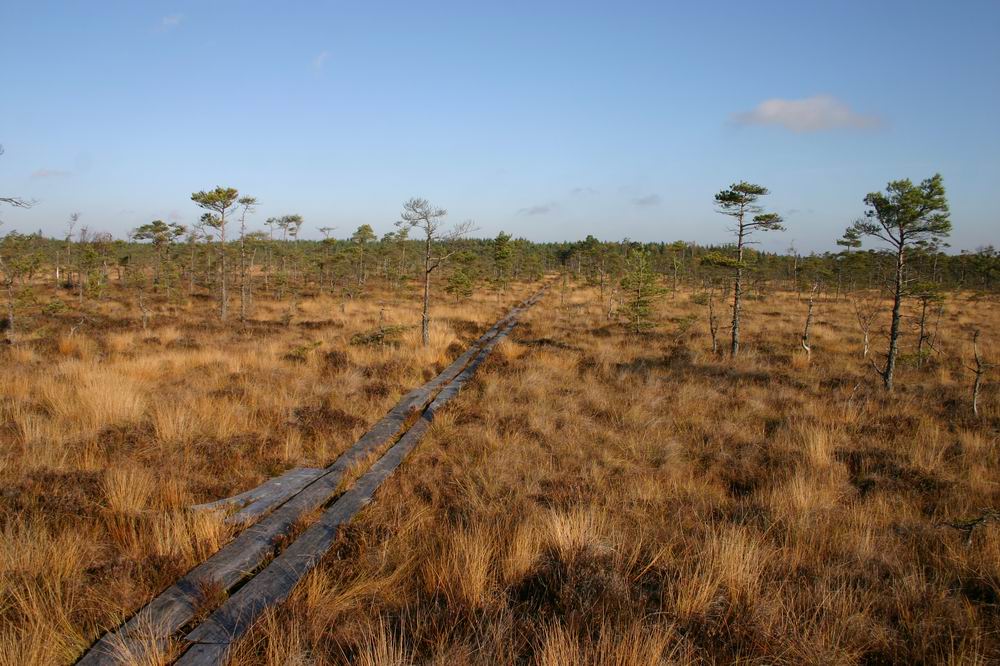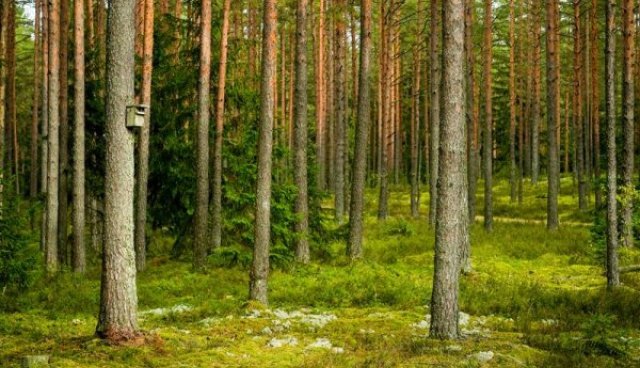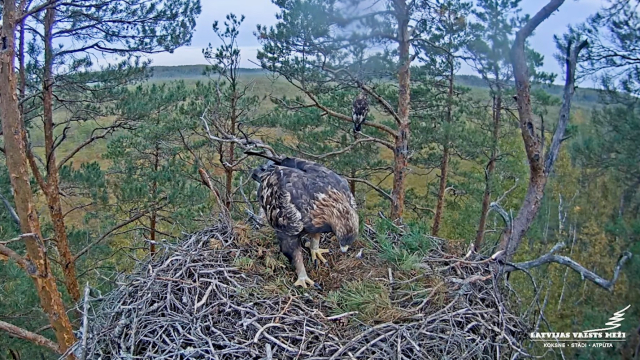
There are three main stages of bog formation, and these are called eutrophic mire, transitional mire, and raised bog.
Have you ever stopped to think how a bog becomes a thought, some interesting questions arise. Why isn’t it just a lake? Why doesn’t it become a river? Why does it look so different to the forest that surrounds it, and why do certain plants and animals appear here that you don’t see anywhere else? There’s not enough space here to answer all of these questions, but it’s worth learning a few bog basics. There are three main stages of bog formation, and these are called eutrophic mire, transitional mire, and raised bog. Each of these stages has its own water and nutrient conditions and its own flora and fauna, and each stage fades gradually into the next – it’s not as if there is a line in the bog where you step from eutrophic mire to transitional mire and another one saying “You are now entering the raised bog”. Well, in fact you MIGHT actually read that on one of Latvia’s State Forests’ information boards as you go along the boardwalk, but it’s not quite the same as crossing the state line.
#1 STAGE
The eutrophic mire is the first stage of bog formation. Plenty of moving water and minerals start the decomposition of dead plants and the formation of a thin peat layer, but the process is incredibly slow. It may take hundreds or even thousands of years for the peat layer to form, depending on the precise conditions locally. But gradually the peat layer thickens, making it harder and harder for plant roots to reach the mineral soil or groundwater. The eutrophic mire is low-lying – in fact it is lower than the raised centre of the bog, almost like a moat around a hill fort. The dominant tree of the eutrophic mire is the birch.
#2 STAGE
The second stage as we walk into the bog is the transitional mire. Here, only a few plants can still put down deep roots through the thicker peat layer, but most can no longer access groundwater, so only plants that can rely on rain and snow melt are able to grow. Pines are the dominant tree, but they are not the soaring specimens of the coniferous forest. Here in the transitional zone they are twisted dwarf pines that grow incredibly slowly. A 4-metre tall example might look like a deformed sapling, but is likely to be around 100 years old.
#3 STAGE
The third and final stage of bog formation is the raised bog. Here plants no longer enjoy any connection with groundwater and mineral soil, and the only source of nutrients is particles in the rainwater and snow. Very few plants can thrive in such demanding conditions, so moss and peat moss dominate and, in effect, dictate everything that happens in the raised bog.
As generations of plants live, die and decompose, the bog surface rises like bread dough rising in a warm bowl. So, when you are standing in the centre of the bog you are actually higher than you were at the bog edge, which may go some way to explaining why the views always seem so spectacular and the horizon looks so unusual.
As with the plants, in each zone of the bog we can expect to see different animals. Around the edges of the eutrophic mire, where the trees are still fairly tall, we might see deer, badgers, foxes, wolves and pine martens. In the transitional mire we may be surprised by the imposing sight or the distinctive call of an elk. If we are really lucky, we might see a bear in springtime when they gorge on cranberries left over from the previous year to give themselves a posthibernation energy rush, or we might see some wild boar taking a mud bath in the slightly antiseptic pools of the mire.


